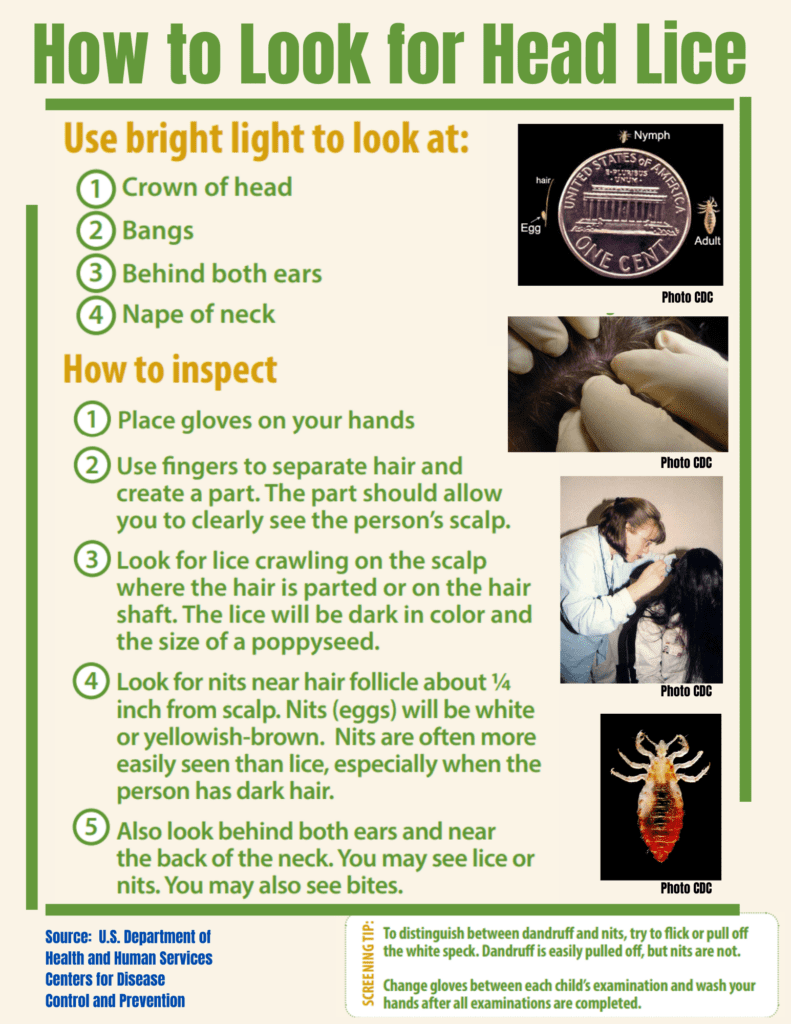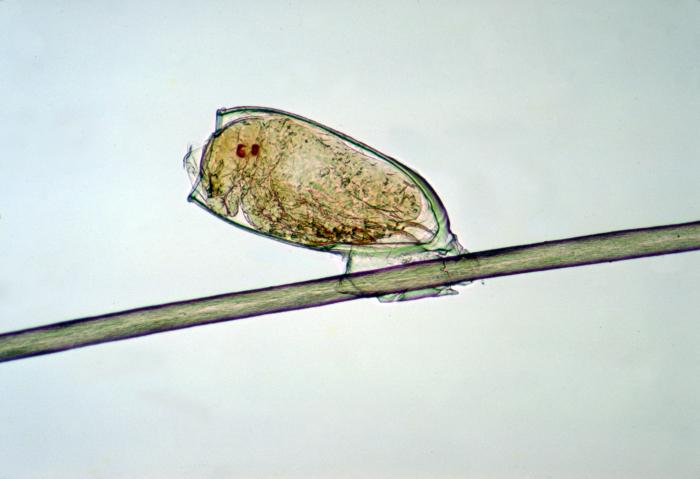Just in time for the new school year, September is national head lice prevention month. The campaign, sponsored by The NPA (National Pediculosis Association), highlights the importance of routine screening and early detection.
Head lice prevention month is a good time to learn how to prevent head lice, how to detect lice, and what to do if someone in your family becomes infected.
What Are Head Lice
Pediculus humanus capitis or head lice are tiny wingless insects about the size of a sesame seed (that’s about 2 millimeters long). These parasites live in human hair feeding on blood sucked from the scalp.
According to the CDC, an estimated 6 to 12 million pediculus humanus capitis (head lice) infestations occur yearly in the U.S. among children ages 3 to 11. Though head lice are more common among school-aged children, anyone, even adults, can get head lice. Head lice do not spread disease and having head lice is not a sign of poor hygiene or being dirty.
Head lice live about 30 days and develop in 3 phases – Nit, Nymph, and Louse.
- Nits – The name for head lice eggs. They are tiny, yellow, and glued to a hair shaft.
- Nymphs – The name for the babies that are the size of a pinhead.
- Louse – Adult lice, these critters have six legs and hang tightly onto human hair with hook-like claws.
Head lice are crawling insects. They do not fly, jump, swim, or hop.
Head lice are passed from person to person through head-to-head contact. It’s also possible to spread head lice via things like shared combs, hair brushes, hats, or lying on a bed, couch, or pillow that has recently been in contact with an infected person.
Head Lice Prevention
Early detection is the best way to prevent head lice from infesting your home. Regular weekly or twice weekly head checks of your children during the school year, after camp, or when they’re in daycare can help you catch lice before they get out of control.
Other head lice prevention tips include teaching your kids to:
- Avoid hair-to-hair (head-to-head) contact.
- Not to share hair implements like brushes, combs, hair ties, or barrettes.
- Not to share clothing that touches your head, like hats, helmets, or scarves.
- Not to lie on a bed, pillow, couch, or carpet that a person with head lice has recently been in contact with.
Though it is less common for head lice to spread via objects, the little buggers can survive for up to 2 days if they fall off a person so they can wait in that hat for another host.
Routine screening and early detection are the key to preventing the spread of head lice. The most common symptom of lice is itching, but it can take weeks for the itching to begin. The longer head lice go undetected, the more they multiply. If you wait until the itching starts, the infestation may be advanced and difficult to treat. It’s better to catch them early, if possible, here’s how.
Head Lice Detection
The most common sign of head lice is itching on the scalp and around the neck, and ears, due to an allergic reaction to louse bites. You may also find sores on the scalp, neck, or shoulders.
You may also be able to see lice, nits (eggs), or nymphs, but they’re very small. How do you find head lice?

Head Lice Treatment
If you find lice or nits on your child’s head there are three avenues of treatment: the comb-out method, delousing products, and medication.
Combing Out Head Lice
Using the comb-out method is a good way to screen for head lice, and to treat infestations in the early stages.
How to use the comb-out method to get rid of head lice:
- Wet down your child’s hair.
- Divide their hair into small sections. Use a nit or louse comb (a very fine-tooth comb) to comb through your child’s hair.
- After combing through a section of hair, wipe the comb off on a piece of wet paper towel. Then check the scalp, comb, and towel for signs of lice.
- Repeat steps one and two until you have combed out all your child’s hair.
If you can detect signs of an active head lice infestation early, the comb-out method can help you remove nits and lice. However, the comb-out method can be tedious and may not be effective in cases of advanced infestation.
Treating Head Lice with Products or Medications
In addition to the over-the-counter products available to treat head lice, there are medications your doctor can prescribe. You should only use head lice products or medications for active infestations. In other words, you have found live lice, nymphs, or nits in a person’s hair.
Note: You should check with your family physician before you begin any head lice treatment. Also, be sure to follow the directions closely.
Get out the comb, it’s National Head Lice Prevention Month! Early detection is the key to controlling the spread of lice. Screening by combing is a safe and cost-effective way to keep head lice from infesting your family.
If you have concerns about head lice and would like to speak with one of our caring medical professionals, contact River Bend Medical Associates. As part of your primary care team, we are here to provide you and your family with the best care in all aspects of your healthcare needs. For more information on our medical practice, or to make an appointment, contact River Bend Medical Associates, or call 916-392-4000.


